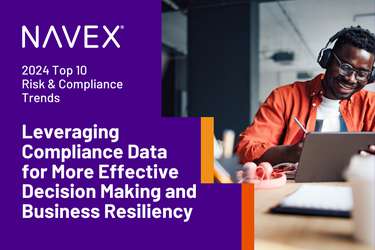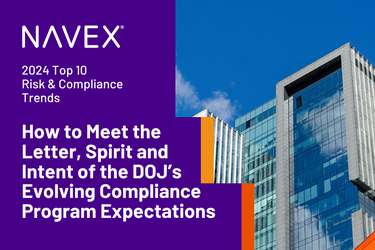EU Disclosure Requirements
The European Union has emerged as a leader in ESG with its Non-Financial Reporting Directive (NFRD) dating back to 2014. When the NFRD was passed, large European businesses were asked to undertake non-financial reporting on ESG matters for the first time. Flexibility was essential – companies were allowed to rely on various frameworks to produce their non-financial statements and report on a “comply or explain” basis. Today we see the downside of this: the lack of disclosure alignment is commonly cited as a major challenge. The revised NFRD is expected to address this issue– but while we wait for it to pass, reporting under the NFRD remains the key source of non-financial information for EU-based asset managers.
There is a definite need for greater clarity on the substance behind sustainability claims, and the EU Commission is leading the way. One of the key elements of recent EU ESG measures is the Taxonomy line-item disclosure guidance (introduced in 2020), and a classification tool of economic activities that can be viewed as sustainable. Businesses now have to map their economic activities to the Taxonomy thresholds and assess if they contribute to or at least Do No Significant Harm (DNSHs) for each of the Taxonomy’s environmental objectives. Financial market participants in scope of the recently adopted Sustainable Finance Disclosure Regulation (SFDR) need to disclose information on Taxonomy-alignment of their financial products.
The direction of travel is clear: to support the transformation of the EU economy disclosure requirements as they get more rigorous. The legislative initiatives those adopted and forthcoming, are central to the EU plan to achieve its ambitious sustainability targets.
US and Global Focus on Integrated Standards
The US is following the EU and international directives to address global ESG initiatives through actions by the Security Exchange Committee (SEC) and International Finance Reporting Standards (IFRS). This month, the IFRS Foundation announced the formation of the International Sustainability Standards Board (ISSB) which reflects the consolidation with the Carbon Disclosure Standards Board, an initiative of the well-recognized Carbon Disclosure Project, used by many US companies, and the Value Reporting Foundation. This is a huge step forward for global adoption of ESG disclosure that goes beyond traditional Sustainability management and reporting that has been an initiative for global companies for more than ten years.
The Value Reporting Foundation, formerly the Sustainability Accounting Standards Board (SASB), was established several years ago to develop industry-level standards and materiality mapping to create a standard with investors in mind. With investor focus on ESG, the need for high-quality ESG disclosure standards will address the investor community’s desire to make informed decisions beyond financial considerations. The plan is to complete the consolidation of these standard bodies by June 2022. When this is in place, global companies will be better positioned to meet the disclosure requirements needed for financial markets and investors to drive transparency and value creation, and mitigate risk. The technical groundwork to streamline corporate sustainability disclosures is in place for market adoption.
EU Climate and Biodiversity Action
On the climate change front, since the Paris Climate Accords in December 2015 the EU has been at the forefront of international efforts to fight climate change. It was instrumental in brokering this first-ever legally binding global climate change agreement – however, some of the member states took pioneering steps before that. Notably, Article 173 of the French Energy Transition Law passed in 2015 required institutional investors to report carbon emissions and publicly listed companies to implement low-carbon strategies. Today, the EU continues to show global leadership in climate action, advocating an integrated approach to mitigate climate change and biodiversity loss.
“By 2017, the EU had reduced its greenhouse gas emissions by almost 22% compared to 1990, reaching its 2020 emission reduction target three years ahead of schedule.” The European Green Deal that followed in 2019 provided a roadmap for legislative and non-legislative initiatives which should help to make Europe the first climate-neutral continent by 2050, safeguard biodiversity, establish a circular economy, and eliminate pollution. To further increase the climate ambition, in December 2020, the “EU leaders endorsed a binding EU target for a net domestic reduction of at least 55% in greenhouse gas emissions by 2030 compared to 1990." To implement this, the EU Commission announced a raft of climate change proposals (including jet fuel tax, carbon border tariff, and many more) known as “Fit for 55.” These measures will likely have an impact on every citizen of Europe in almost every aspect of their lives.
EU Corporate Action
Ambitious sustainability targets are in the spotlight for the EU regulators, and this should translate into corporate action.
Although the NFRD doesn’t require that, companies held up as exemplars driving ESG strategies in the EU (including Eni, Bayer, Unilever, and others) define science-based targets aligned to Paris Agreement and/or United Nations Sustainable Development Goals (UNSDGs). Research shows that many organizations still do not follow this best practice, and increased regulation is expected to fix this. Envisaged NFRD amendments would require companies to define targets and report annually on progress against them.
The question of who should own ESG seems to be mostly sorted for EU-based organizations – back in the days when ESG was still known as “Corporate Sustainability”. Whether it be a dedicated Chief Sustainability Officer reporting directly to the Board, or a Sustainability Unit inside of the Investor Relations – most large businesses in Europe have had this function in some form for years. The ESG paradigm, however, brought in the “G”, which has always been managed separately by ethics and compliance and/or legal counsel. At this point, working in silos is no longer an option: going forward, a coordinated approach will be key to an integrated risk management approach.
US Action
The writing is on the wall with pending US regulation upcoming from the SEC. As companies realize the need to comply with investor pressure today without regulation, further adoption is inevitable across all industries. Historically, the US was driven by Corporate Social Responsibility (CSR), which focused on some elements of what we are seeing under the Social component of ESG today. The evolution continues with the recognized need to fully integrate environmental, social and governance. As corporations drive toward profitability, it's imperative they align with key performance indicators and metrics to determine how well they are performing in each of these categories.
US organizations have taken action without regulation as key stakeholders, like consumers, have demanded insights into how companies are conducting business when producing and selling products and services. As an example, Intel and other hardware companies launched a non-profit to focus specifically on conflict minerals. From that, the Dodd-Frank Act incorporated conflict minerals compliance to identify if armed guerilla groups or forced labor were being used to extract minerals from mines to produce products like the iPhone and other technology.
In other areas, companies have taken the initiative to invest in CSR and Sustainability reporting using key frameworks like the Value Reporting Foundation, Global Reporting Initiative and others to get ahead of regulation (and because it made practical business sense). Once companies adopted these initiatives, they quickly realized cost savings, operational efficiencies, and increased brand recognition.
The movement around ESG will propel CSR and Sustainability initiatives forward as we now look at them from investor, financial and consumer lenses.
Next Steps – EU, US and Beyond
The recent COP26 summit in Glasgow, UK brought nations together to accelerate action towards the goals of the Paris Agreement and the UN Framework Convention on Climate Change. Although there is some disappointment among environmental groups over the conference outcomes, investor activism is clearly on the rise. More than 450 financial firms representing $130 trillion USD in assets – or 40 percent of the world’s financial assets – committed to use their funds to work towards net-zero emissions by 2050. This means corporations will face greater scrutiny over their ESG policies.
The revised NFRD, soon to become the Corporate Sustainability Reporting Directive (CSRD), will considerably reinforce non-financial reporting requirements. Additionally, this will expand their scope to cover around 50,000 entities (compared to the 11,700 currently subject to the NFRD). Companies will have to report to new European Sustainability Reporting Standards currently developed by the European Financial Reporting Advisory Group (EFRAG) in close cooperation with the GRI. This unprecedented collaboration aims to contribute to further convergence between European and global sustainability reporting standards. In a best-case scenario, the CSRD can be adopted in late 2022.
Beyond the EU, the UK government has proposed UK companies should meet the Taskforce on Climate-related Financial Disclosures (TCFD) recommendations from 2022. Large Swiss firms will be required to report on their climate-related risks starting in 2024, and the mandatory guidance is expected by the end of summer 2022.
In APAC, vast political, economic, and social differences among countries translate into fragmented ESG regulations across the region. Navigating this is the primary challenge for multinational organizations. Leading countries have made commitments to achieving net-zero emissions within varying timeframes. South Korea, Japan and New Zealand plan to do so by 2050, while China and Indonesia have pledged to become carbon-neutral by 2060. With the EU Taxonomy introduced in 2020, APAC regulators started working on green taxonomies as well. Earlier this year China announced a collaboration with the EU to adopt a common taxonomy for green investments. Following the EU lead on mandatory non-financial reporting more countries in the region are expected to set stricter regulations around sustainability reporting soon.
2022 Global Prediction
In 2022, the shift from ESG voluntary guidelines to binding regulations will continue and accelerate. Key new legislation including the CSRD and the pioneering EU Directive on Corporate Due Diligence and Corporate Accountability are likely to be adopted. Pursuant to the Taxonomy and SFDR requirements, asset and wealth managers will need to integrate ESG into everything they do moving to the next level of ESG integration at a product level. New regulations will require new data sets – effectively tackling the ESG data challenge will remain pivotal to success.
For the complete 2022 Top 10 Trends in Risk and Compliance eBook









